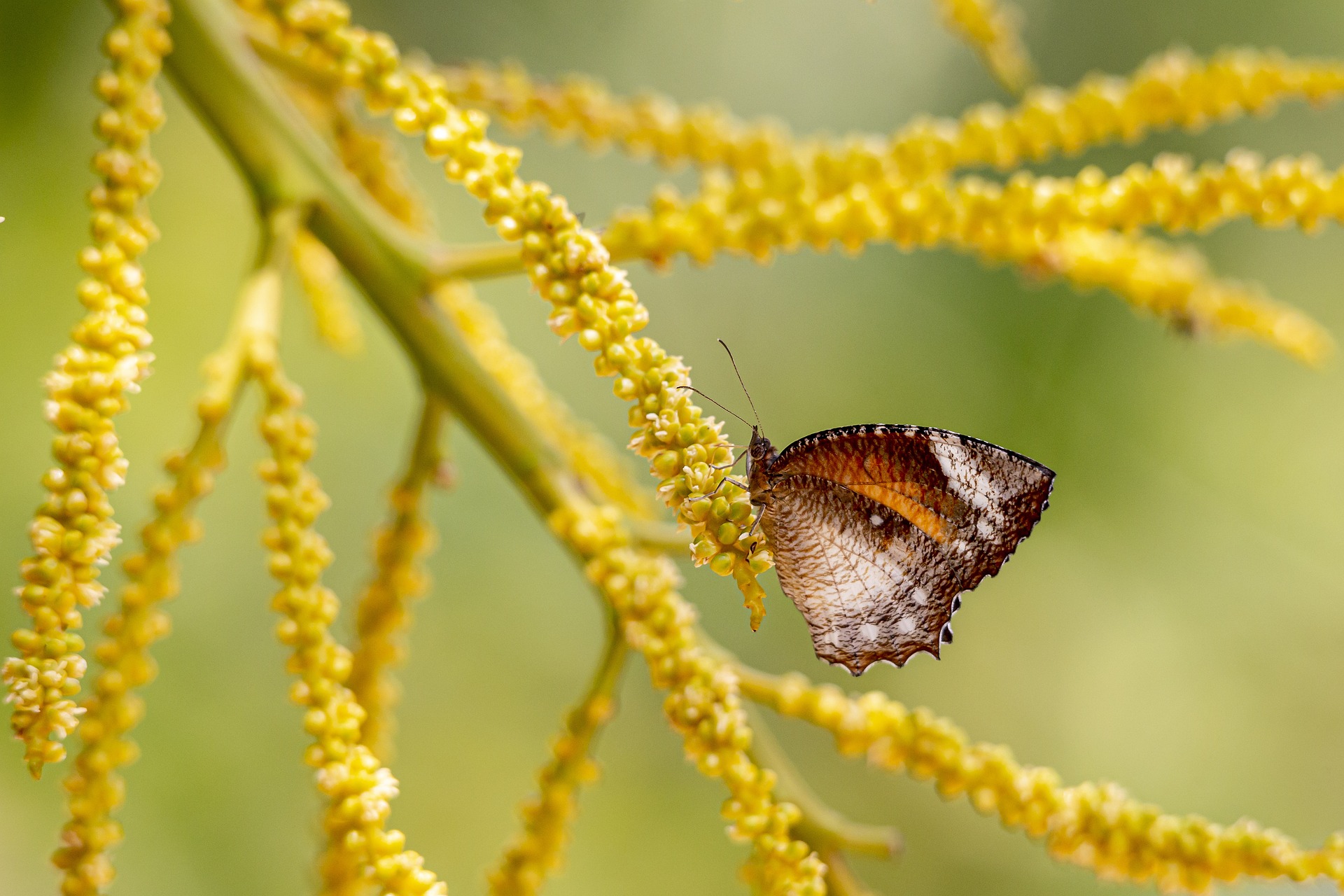The Tailed Palmfly (Elymnias caudata) is a species of butterfly in the family Nymphalidae, belonging to the subfamily Satyrinae. It is known for its distinctive tails and its mimicry of other butterfly species. Here is a detailed overview of the Tailed Palmfly:
Appearance:
- Wingspan: The Tailed Palmfly typically has a wingspan of about 70 to 85 millimeters.
- Coloration:
- Male: The male has a striking appearance with dark brown to black upper wings, featuring a prominent white band or patch on the forewings. The hindwings are dark with an iridescent blue sheen and have elongated tails.
- Female: The female exhibits mimicry and resembles toxic butterflies such as those from the Danaidae family. The upper side of the wings is brown with white or cream patches and spots, while the hindwings are brown with tails and white spots along the margins.
- Underside: Both sexes have a cryptic brown and gray mottled underside, which helps them blend into their surroundings when at rest.
Habitat:
- Preferred Habitats: The Tailed Palmfly is commonly found in tropical and subtropical forests, gardens, palm plantations, and wooded areas. It prefers shady and humid environments.
- Geographic Range: This species is primarily found in Southeast Asia, including regions like Malaysia, Indonesia, Thailand, and the Philippines.
Behavior:
- Feeding: Adult butterflies feed on nectar from various flowers, as well as on rotting fruits and tree sap. They are also known to visit damp patches on the ground to absorb minerals.
- Mimicry: The female’s appearance mimics that of distasteful butterflies, providing protection from predators through Batesian mimicry.
- Flight Pattern: The Tailed Palmfly has a slow and fluttering flight, often staying close to the ground or within the undergrowth. They frequently bask with their wings open, displaying their bright colors.
Life Cycle:
- Eggs: Eggs are laid singly on the leaves of host plants, primarily palm species.
- Larvae (Caterpillars): The caterpillars are green and well-camouflaged against the palm leaves they feed on. They have a cylindrical body and a slightly flattened head.
- Pupae: The pupae are camouflaged to resemble the leaves or stems of the host plants, aiding in their protection from predators.
- Adults: After emerging from the pupae, adults focus on mating and laying eggs to continue the life cycle.
Ecological Role:
- Pollination: As nectar feeders, Tailed Palmflies play a role in the pollination of flowering plants.
- Food Source: They are part of the food web, serving as prey for various predators, including birds and spiders.
Conservation Status:
- Population: The Tailed Palmfly is not currently considered threatened and has stable populations in many areas within its range.
- Threats: Habitat destruction, deforestation, and pesticide use can impact local populations, although the species is relatively adaptable to different environments.
Interesting Facts:
- Mimicry: The mimicry by females of toxic butterflies helps them avoid predation, an excellent example of Batesian mimicry.
- Tails: The tails on the hindwings may play a role in predator distraction, drawing attacks away from the vital parts of the butterfly’s body.
Identification Tips:
- White Band on Males: The prominent white band or patch on the forewings of males is a key identifying feature.
- Tails: The presence of elongated tails on the hindwings of both sexes helps in identification.
- Mimicry Patterns on Females: The female’s resemblance to unpalatable butterflies can help distinguish her from other similar species.
In summary, the Tailed Palmfly (Elymnias caudata) is a visually striking butterfly known for its mimicry and distinctive tails. Found primarily in Southeast Asia, it inhabits tropical and subtropical forests, palm plantations, and gardens. Its unique appearance, behavior, and ecological roles make it an interesting and notable species within its habitat.
Visited 194 times, 31 visit(s) today
Views: 284
Subscribe to the newsletter:
